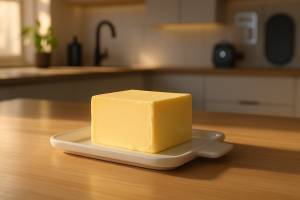 Creams, diets, cosmetic surgery… The hunt for cellulite or “orange peel skin” is a huge business. But what do these unsightly dimples really mean, and is it possible to get rid of or reduce them?
Creams, diets, cosmetic surgery… The hunt for cellulite or “orange peel skin” is a huge business. But what do these unsightly dimples really mean, and is it possible to get rid of or reduce them?
“Cellulite only affects women”
(almost) TRUE. Nine out of ten women are affected by cellulite, according to a German scientific study. It is much rarer in men (one in 50). “Cellulite is a form of constitutive fat in women,” explains Laurence Plumey, a nutritionist and hospital practitioner, founder of napsotherapy “preventive consultations that help people eat better, sleep better and move better” and author of Le Monde merveilleux du gras : Tout sur ces rondeurs qui nous habitent (ed. Eyrolles). “It’s a genetically predicted energy reserve in the thighs, and highly sensitive to the female sex hormones estrogen and progesterone. This is why it generally starts to appear at puberty. Fat “is a useful organ”, the doctor reminds us, and in women it accounts for 20-25% of total body weight. It’s distributed everywhere. But in the thighs and buttocks, where most cellulite appears, the fat-storing cells (adipocytes) are not organized in the same way as in other parts of the body.
Article continued below
“Cellulite is all fat”
FALSE. In cellulite-prone areas, adipocytes, or fat-storing cells, are surrounded by small “walls” of elastic tissue, a kind of little bag under the skin. Cellulite is caused both by the swelling and multiplication of adipose cells, under the effect of female hormones, and by water retention in these tissues.
Finally, fibrous tissue lies between the skin and these tissues. Over time, they lose their suppleness. This gives the skin’s surface an irregular appearance, known as “orange peel” or dimpling.
“Putting on weight causes cellulite to appear”
FALSE. Generally speaking, weight gain is not the cause of cellulite. Cellulite is found just as much in slim women with flat tummies as in overweight women. On the other hand, certain genetic factors favor the appearance of cellulite. “For example, cellulite is more common in women from the Mediterranean basin,” adds Dr. Plumey.
“It’s impossible to get rid of them for good”
TRUE. Despite the claims of manufacturers of miracle anti-cellulite creams and supplements, there’s no way to get rid of cellulite completely. Simply because “you can’t make the fibrosis disappear, which is permanent. You can only improve its appearance to a very relative extent,” stresses Laurence Plumey.
Sport has no profound effect on cellulite. However, certain sports can reduce the appearance of cellulite by improving muscle tone and blood circulation. All water sports are to be encouraged – swimming, walking in water, cycling, aquagym, aquabike – thanks to the massaging effect of water.
Finally, the doctor is categorical: there is no miracle food or cream to eliminate cellulite. “This fat is resistant to dieting, and creams have a minimal and often disappointing effect. Massage and drainage treatments can improve the appearance of dimpled skin, while stimulating blood circulation.
As for aesthetic interventions (waves, laser, injections, even cosmetic surgery if the moral suffering caused by cellulite is too great), they can have an effect for a few months, but are not all risk-free.
“Cellulite is bad for your health”
FALSE: “What is now commonly known as cellulite, orange peel skin or dimpled skin, poses no danger to health. It’s just cosmetic damage,” asserts Laurence Plumey.
However, the term cellulite also refers to an infection under the skin, caused by bacteria entering through a wound, for example. This type of cellulite is dangerous and needs to be treated urgently. But it has nothing to do with cosmetic cellulite. In fact, until the 1930s, the term “cellulite” was used only to describe this subcutaneous infection.
The use of this term to designate aesthetic cellulite appeared in the mouth of a doctor in a women’s magazine in 1933,” recounts Rossella Ghigi, Italian researcher and author of Le corps féminin entre science et culpabilisation. A history of cellulite. The evolution of the beauty canon, towards ever-slimmer and more athletic women, has made aesthetic cellulite a feminine “problem” to be combated at all costs.






